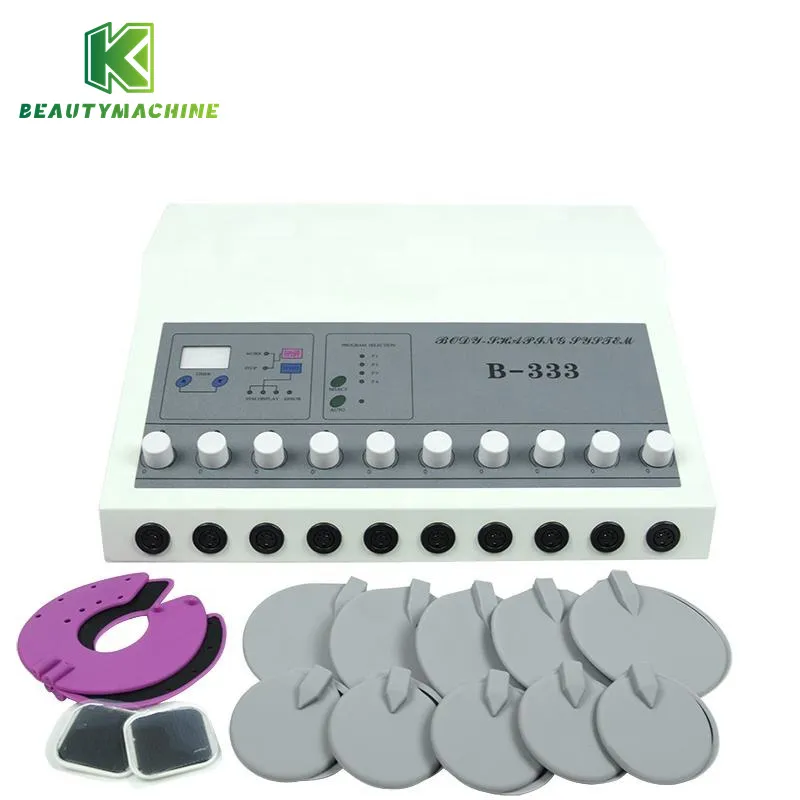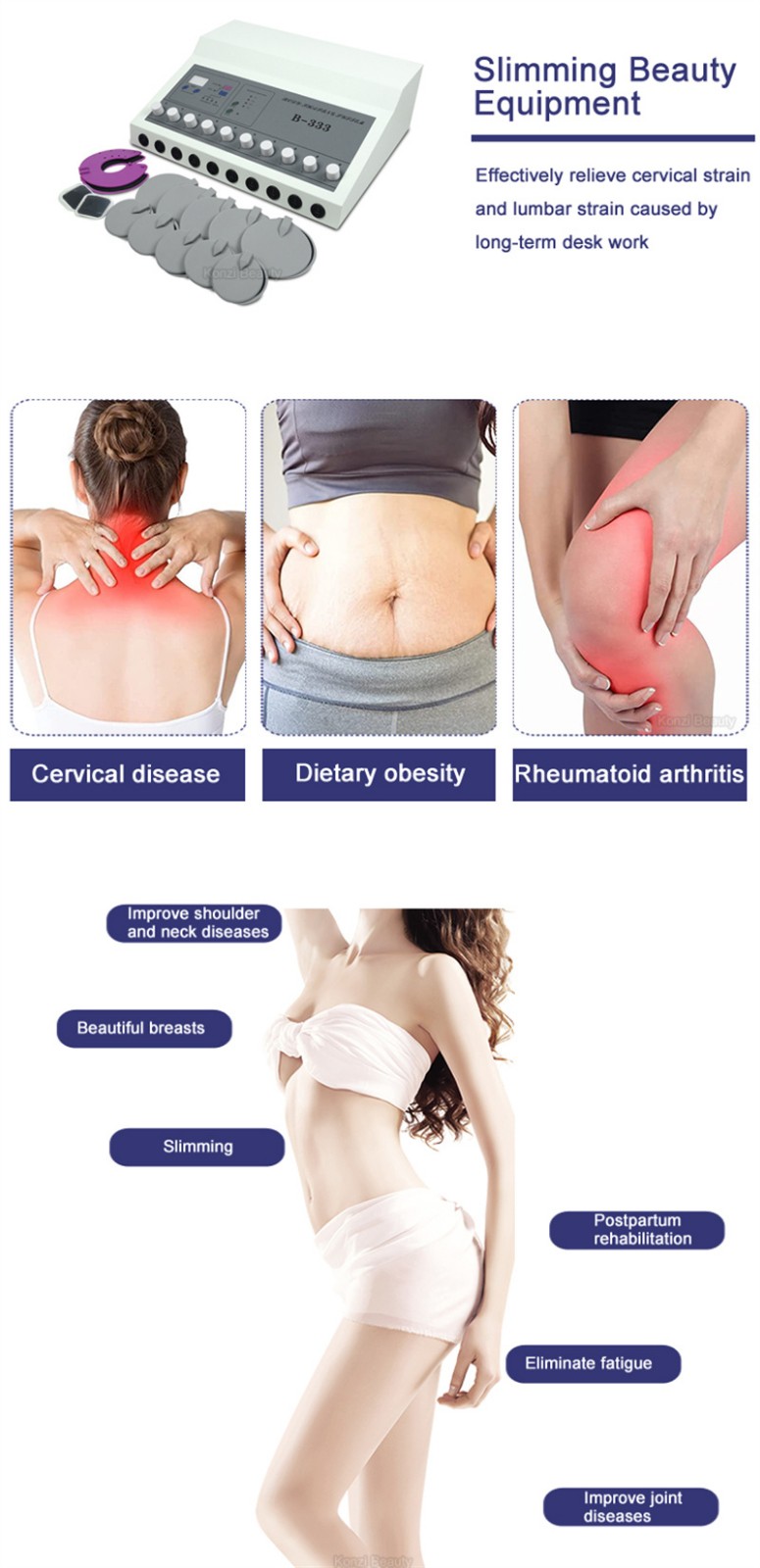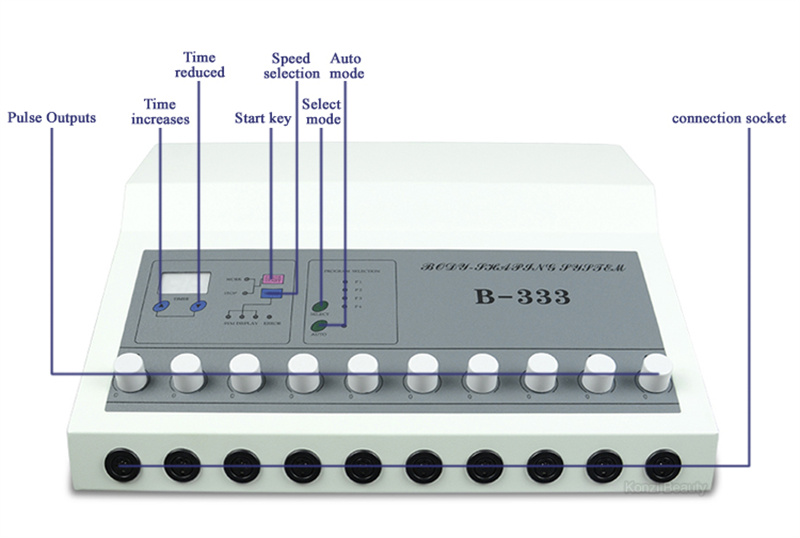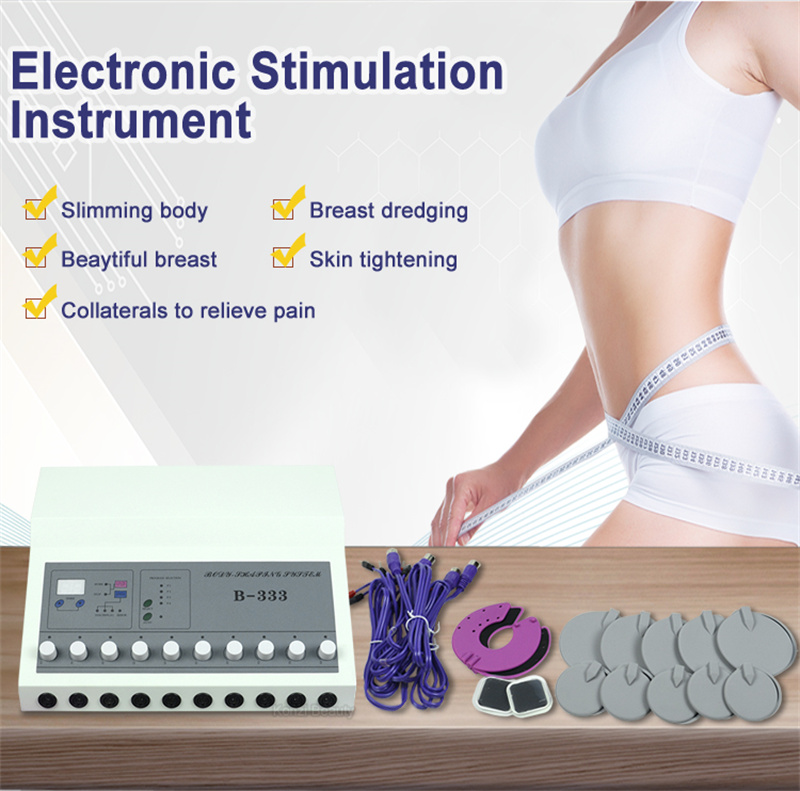
Does an EMS muscle stimulator machine help with lymphatic drainage?
2025-10-30 15:30
EMS muscle stimulator machines are becoming a widely used assistive device in modern rehabilitation medicine, beauty therapy, and sports training. Their primary function is to activate muscle contraction through electrical stimulation, thereby achieving muscle building, fatigue relief, and rehabilitation benefits.
In recent years, increasing marketing and user experience reports have claimed that EMS muscle stimulator machines can help promote lymphatic drainage. So, is this claim valid? Is there any physiological basis or clinical support for the effects of EMS muscle stimulators on lymphatic system function?
This article will systematically address this question from multiple perspectives, including medical principles, the mechanisms of electrical stimulation, the structure of the lymphatic system, and the actual effects of electrical stimulation on lymphatic flow.

Understanding the Basic Mechanism of EMS Muscle Stimulator Machines
1. What is an EMS Muscle Stimulator Machine?
An EMS (Electrical Muscle Stimulation) muscle stimulator uses low-frequency pulsed current applied to subcutaneous tissue to induce passive contraction of skeletal muscle. Its main application scenarios include:
• Rehabilitation medicine: Helping with functional recovery after nerve or muscle damage;
• Fitness training: Activating muscle groups and improving muscle endurance and explosive power;
• Physical therapy: Relieving muscle fatigue, stiffness, and pain;
• Beauty and slimming: Used in beauty salons for purposes such as "non-invasive body shaping" and "circulatory support."
The EMS muscle stimulator machine relies on adjusting various parameters (frequency, waveform, pulse width, intensity, etc.) to influence the intensity and rhythm of muscle contractions. Its effects extend beyond the muscles and may also affect local blood circulation and interstitial fluid flow.
2. What structures does the EMS muscle stimulator machine target?
When the EMS muscle stimulator machine is powered on, its signals act on the motor nerves and muscle fibers beneath the skin, stimulating muscle contraction. Passive contraction triggers a chain reaction in the following structures:
• Venous walls: compression promotes venous blood return;
• Lymphatic vessel walls: indirectly accelerates lymphatic return;
• Interstitial fluid: reduces tissue fluid retention;
• Connective tissue: improves adhesions and improves local circulation.
Thus, from a structural stress perspective, the EMS muscle stimulator machine may indeed have an effect on the lymphatic system.

The Medical Principles of Lymphatic Drainage: Why is it Critical?
1. What is Lymphatic Drainage?
Lymphatic drainage refers to the process by which interstitial fluid is collected through lymphatic capillaries to form lymph and ultimately return to the venous system. It is a crucial component of the body's elimination of metabolic waste, maintenance of fluid balance, and immune defense. Lymphatic flow relies on the following forces:
• Skeletal muscle contraction: muscle compression of lymphatic vessels;
• Superficial massage or physical therapy stimulation;
• Valve action and venous pressure gradient;
• Negative chest pressure caused by respiratory movement.
Any external mechanism that promotes muscle contraction can potentially promote lymph flow.
2. Common Consequences of Lymphatic Blockage
If lymphatic drainage is blocked, it may lead to:
• Tissue edema, particularly in the lower limbs and face;
• Reduced immune defenses;
• Slowed toxin metabolism and dull skin;
• Postoperative lymphedema and delayed recovery.
Therefore, maintaining lymphatic drainage is a key element in maintaining overall health.

Mechanism of Action of the EMS Muscle Stimulator Machine on Lymphatic Drainage
1. How Does Muscle Contraction Affect Lymphatic Flow?
The EMS muscle stimulator machine uses electrical current to induce rhythmic passive contractions, simulating the pumping action of muscles during natural movement. This "external active muscle pump" has the following physiological effects:
• Compresses lymphatic capillaries, driving lymphatic fluid toward the proximal end;
• Stretches and relaxes connective tissue, facilitating the exchange of substances between tissue fluid and lymphatic vessels;
• Rhythmic stimulation accelerates local lymphatic circulation;
• Accelerates the excretion of metabolic products, inflammatory factors, and excess water.
Research has shown that passive muscle contraction has a significant boost to the lymphatic system, especially for those who remain inactive for extended periods or lack physical activity. EMS muscle stimulators can simulate this "active" state and restore physiological drainage function.
2. The Effect of Frequency and Pulse Parameters on Drainage Efficiency
Different EMS settings have significant effects on lymphatic drainage:
• Low frequency (<10Hz) + long pulse width (>300μs): Promotes deep muscle relaxation and slows lymphatic flow;
• Medium frequency (10-30Hz): Suitable for simulating rhythmic pumping;
• High frequency (>50Hz): More suitable for muscle activation rather than lymphatic drainage. Therefore, EMS muscle stimulator machines suitable for lymphatic drainage are typically used in low-medium frequency, gentle intensity, and a soothing rhythm.
Analysis of the Medical Value of EMS Muscle Stimulator Machines for Lymphatic Drainage
1. Rehabilitation and Postoperative Care
Lymphedema is a common complication among patients undergoing various surgeries (such as breast cancer surgery and lymph node dissection). By assisting the muscle pump mechanism, EMS muscle stimulator machines can reduce postoperative edema and shorten the recovery period. Electrical stimulation is particularly important as a physical adjunct therapy for patients undergoing lower limb surgery, varicose veins, and those who are bedridden for extended periods.
2. Beauty and Body Contouring Applications
Common goals for using EMS muscle stimulator machines in the beauty industry to promote lymphatic drainage in the face or body include:
• Improving edema-related obesity;
• Alleviating facial puffiness and eye bags;
• Stimulating skin metabolism and enhancing radiance;
• Assisting in facial and leg slimming.
These applications do not directly reduce fat, but rather produce indirect body contouring effects by accelerating the metabolism of tissue fluid and toxins.
3. Improving Circulatory Disorders in Sedentary Individuals
Modern office workers experience lower limb congestion, edema, and fatigue caused by prolonged sitting. The cyclical muscle stimulation of the EMS muscle stimulator machine is expected to improve lymphatic and venous return in the lower limbs, helping to prevent phlebitis and chronic edema.

Precautions: Key Points in Using the EMS Muscle Stimulator Machine
1. Controlling Duration and Frequency of Use
Each use of the EMS muscle stimulator machine should be limited to 20 to 30 minutes, preferably two to four times per week, to avoid muscle fatigue.
2. Optimal Electrode Application Positioning
Avoid bony prominences, wounds, and inflamed areas. Ideally, the muscle belly (the bulge of the muscle) should be selected to ensure that the electrical stimulation reaches the deeper muscle fibers.
3. Caution or Contraindications for Certain Populations
Including but not limited to:
• Pacemaker Carriers;
• Epilepsy Patients;
• Pregnant Women;
• Patients with Thrombophlebitis;
• Open Wounds
4. Not a Replacement for Exercise and Clinical Treatment
The EMS muscle stimulator machine is an auxiliary device and cannot completely replace natural movement or manual lymphatic drainage (MLD) performed by a physical therapist, nor can it replace medication or surgical treatment.
The EMS muscle stimulator machine does indeed aid lymphatic drainage
Combining current analysis of the EMS muscle stimulator machine's mechanism of action with our understanding of the physiological structure of the human lymphatic system, we can clearly conclude the following:
✅ The EMS muscle stimulator machine can indirectly and effectively promote local and systemic lymphatic drainage by simulating muscle pumping pressure.
✅ Its effectiveness is particularly valuable for treating prolonged periods of inactivity, postoperative edema, facial swelling, and cosmetic contouring.
However, achieving stable and controllable drainage requires scientific frequency setting, appropriate use, and adherence to safety regulations.
Thus, the EMS muscle stimulator machine is not only a muscle activation device but can also be considered a physical therapy tool with the ability to assist lymphatic drainage. Appropriate use can enhance circulatory system efficiency and improve tissue metabolic environment, offering valuable functional value in both medical and cosmetic treatments.
What makes KuoHai different from other suppliers?
Unlike many trading companies, KuoHai is a real manufacturer with its own production lines and R&D team. This allows us to control product quality, cost, and delivery time. Our advanced production facility in Foshan ensures efficient supply and stable performance for every device.
Customers can buy directly from our factory, enjoy wholesale discounts, and request customized models. With a strong reputation as a China supplier, KuoHai stands for honesty, quality, and customer-oriented service.
Get the latest price? We'll respond as soon as possible(within 12 hours)







